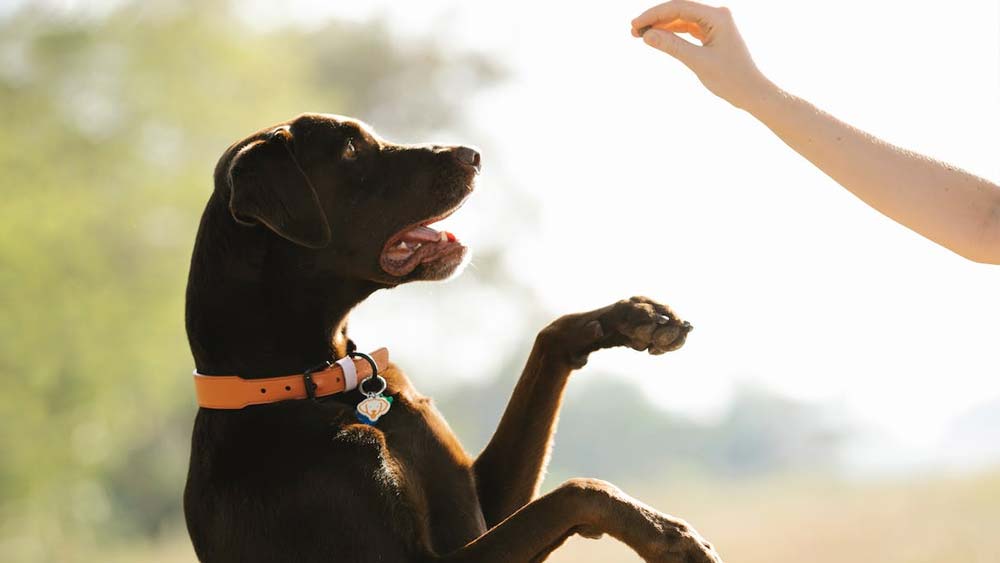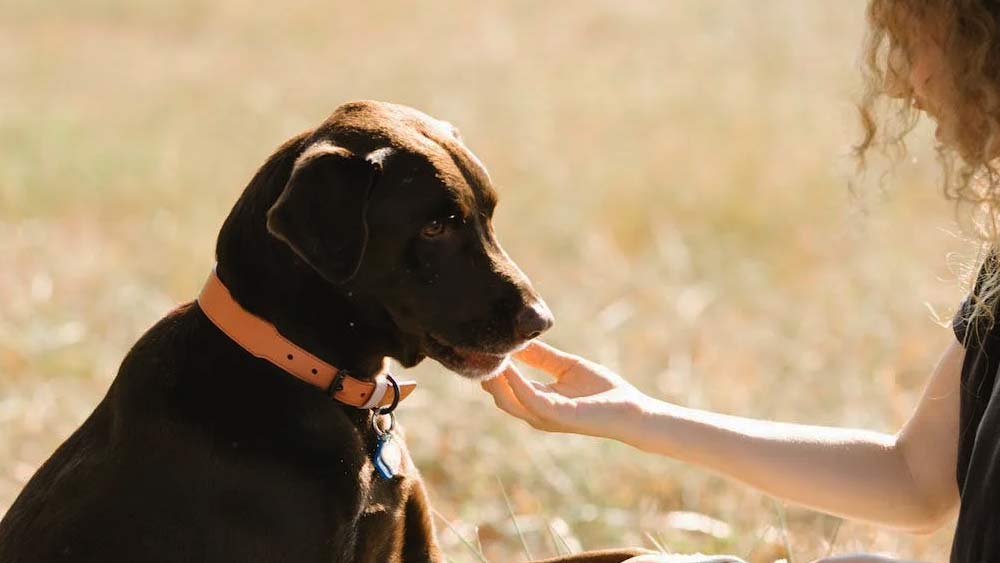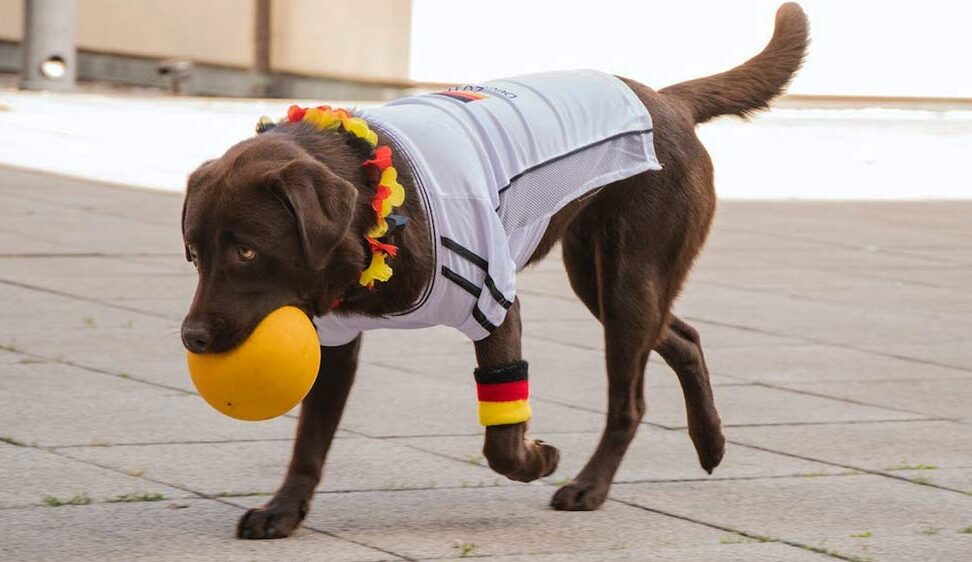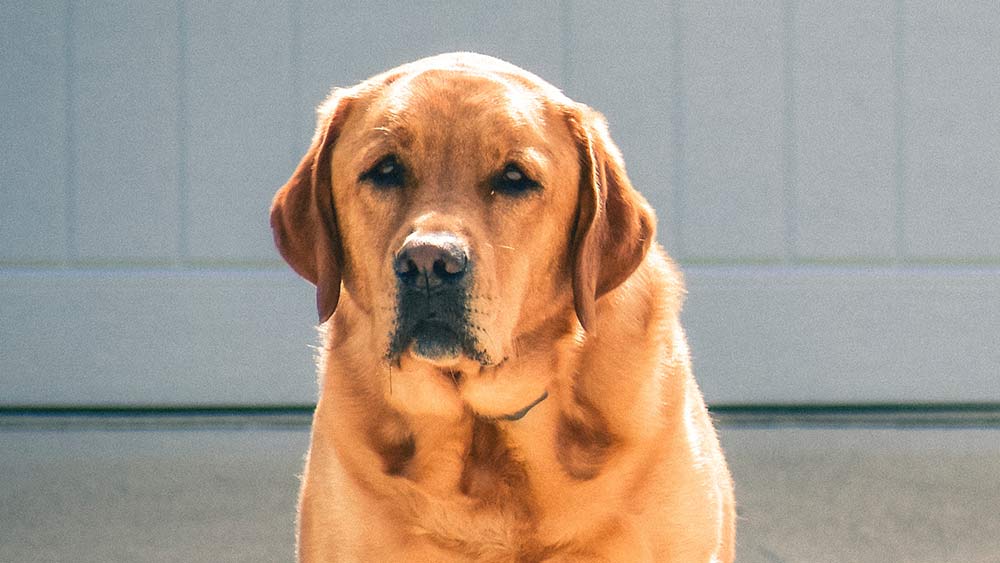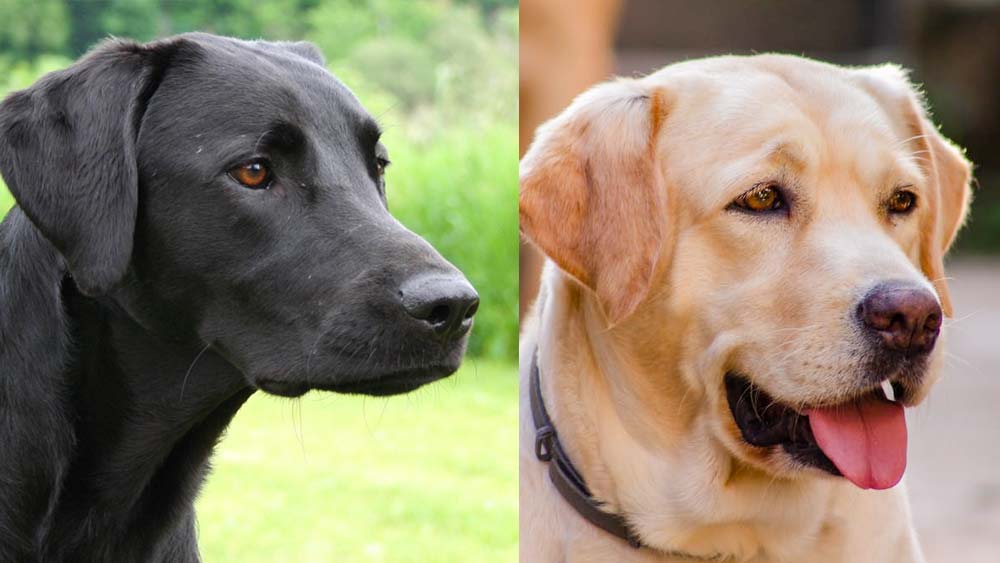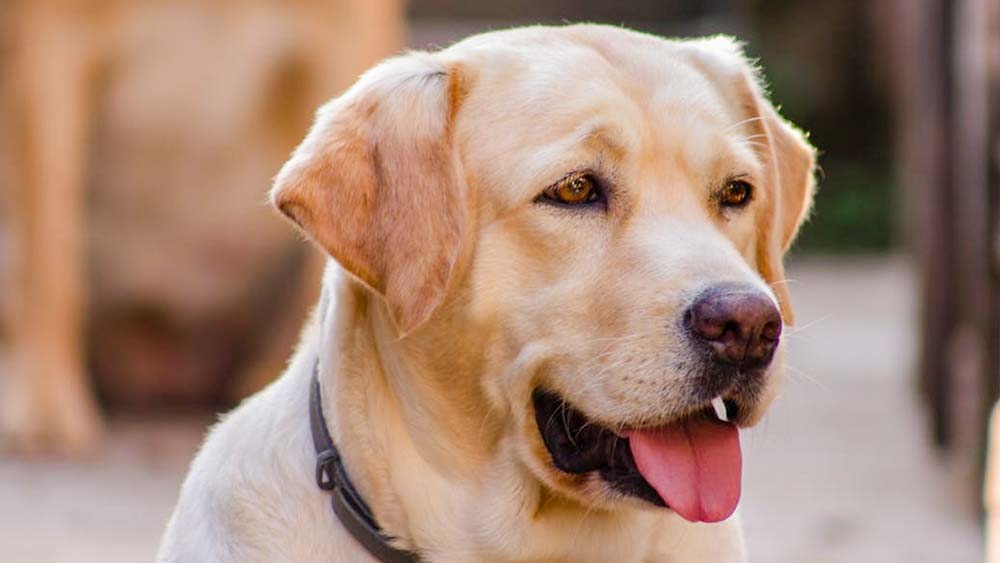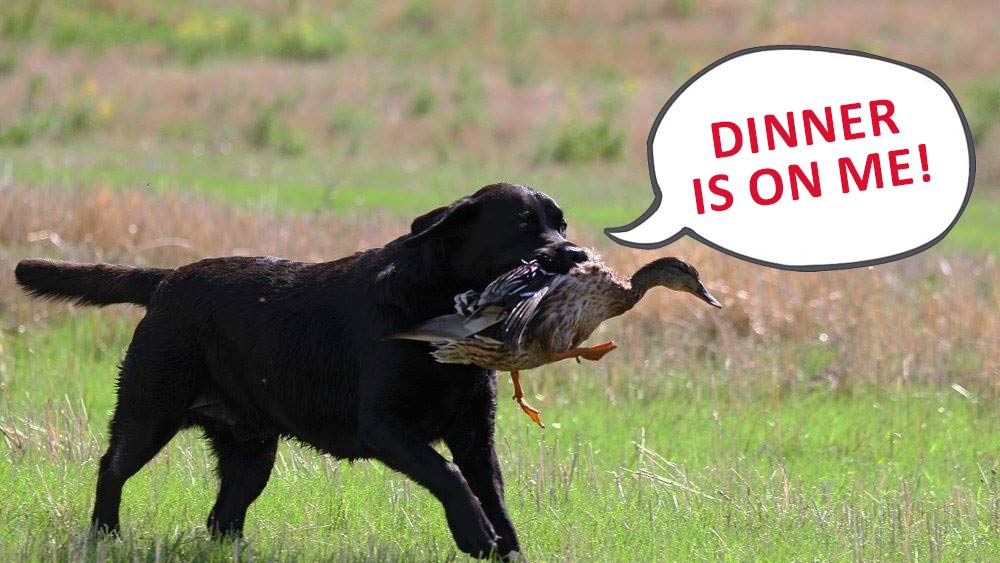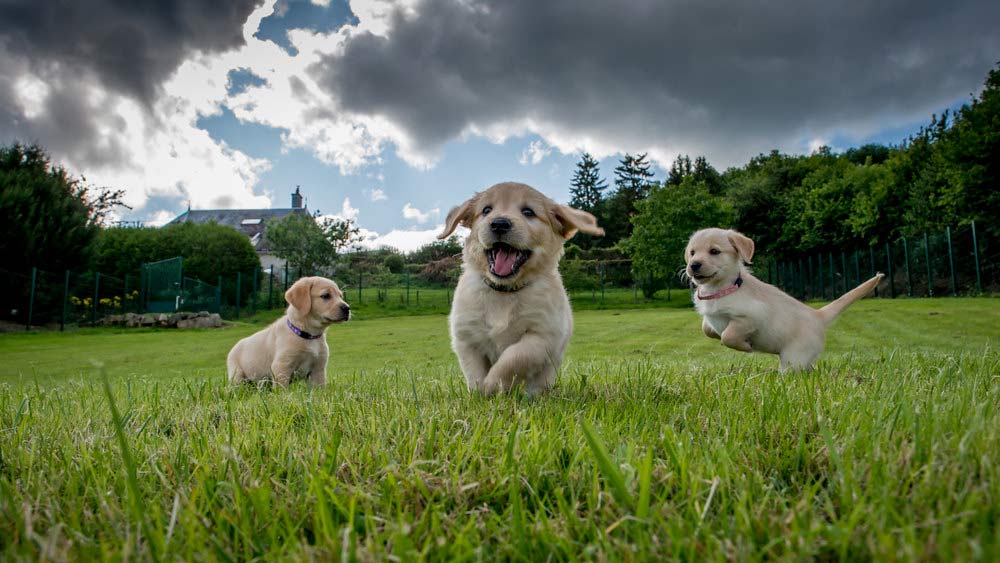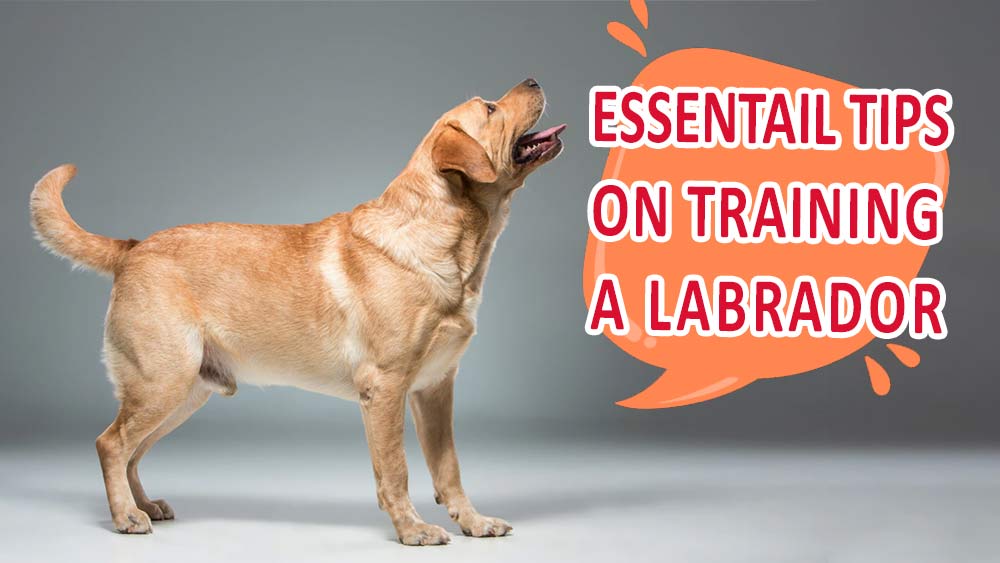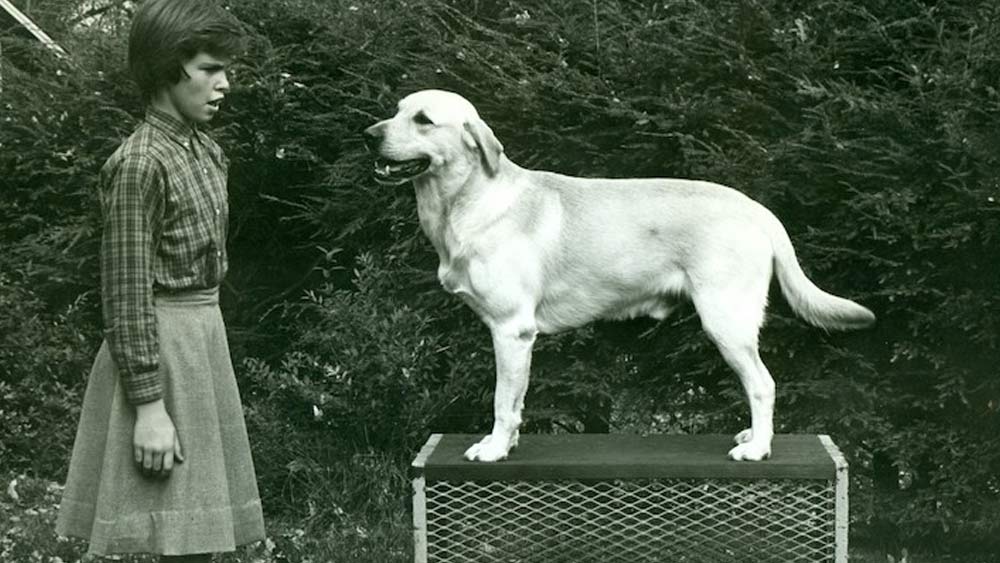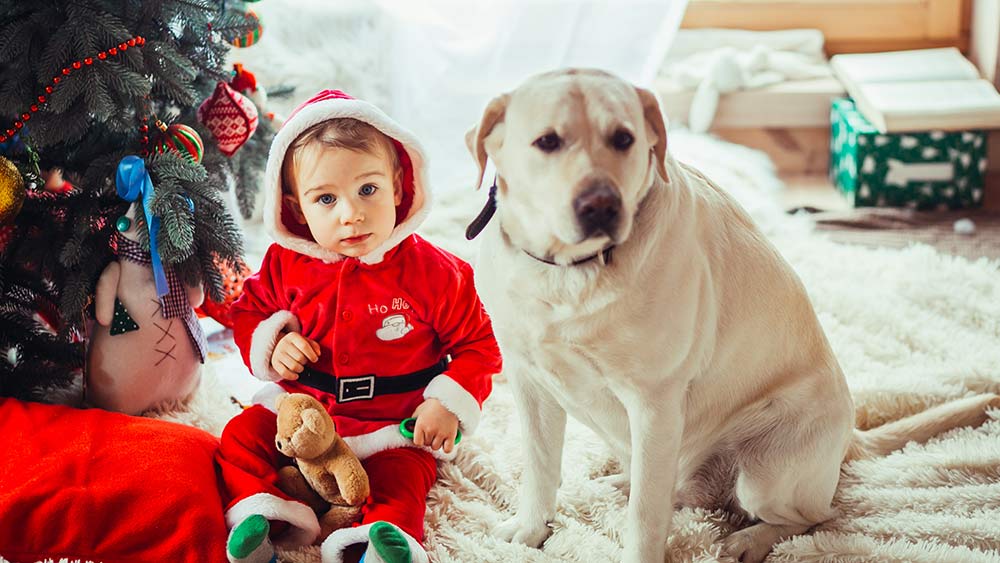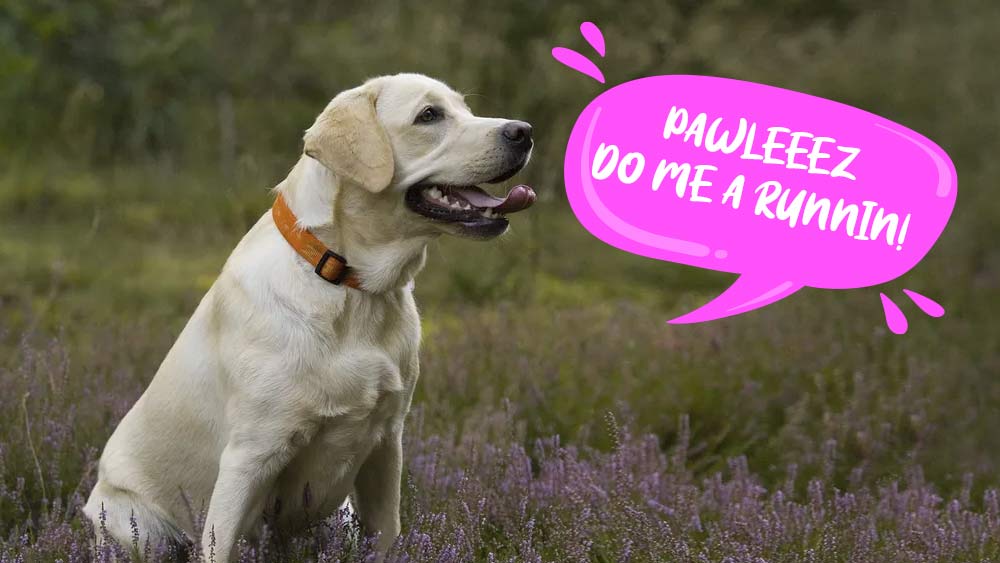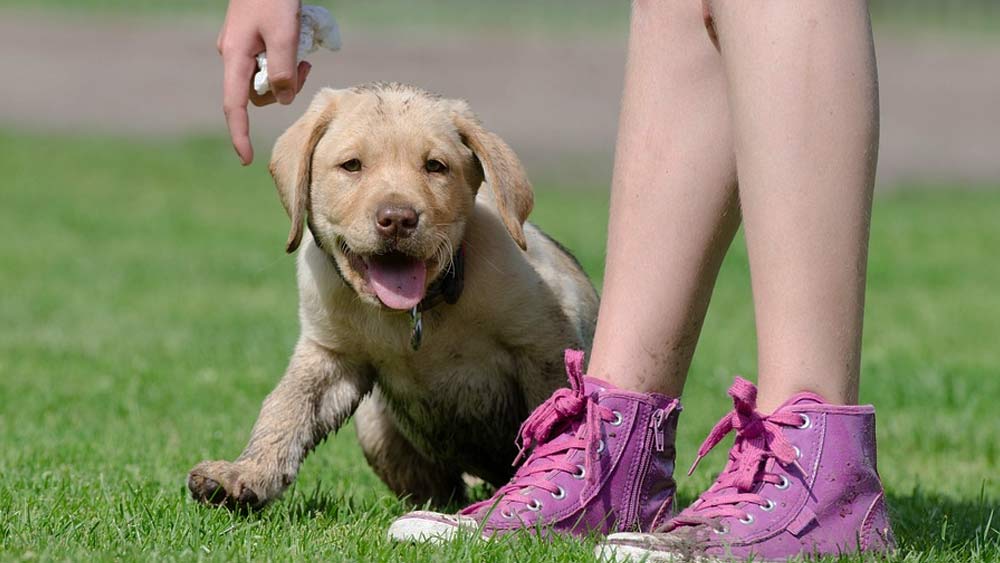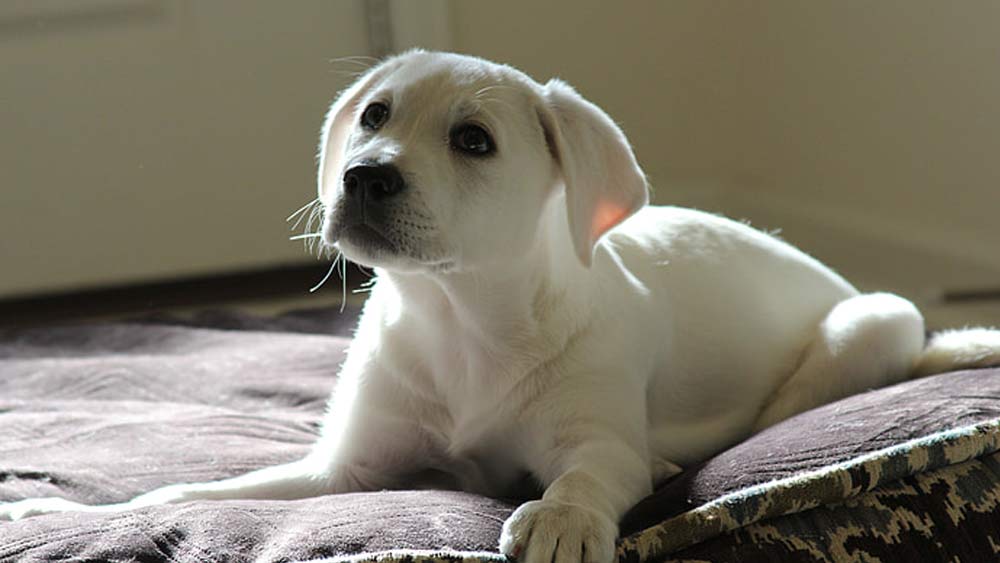Teaching your Labrador tricks can be a fun and rewarding experience. Teaching tricks not only strengthens your bond with your dog, but it also keeps them safe in potentially dangerous situations. Teaching tricks to Labradors will become second nature with patience, dedication, and lots of positive reinforcement! Understanding how to motivate your pup is essential for successful training sessions, whether you’re teaching basic commands or more complex behaviors. Continue reading to learn the best tricks and techniques for teaching Labradors quickly and effectively!
When is it best to start teaching a dog?
It’s critical to begin teaching tricks as soon as possible, and the best time is when your Labrador is 8-10 weeks old. Puppies learn quickly at this age because their personalities are still developing and they are learning how to interact with humans. Puppies become more independent as they grow older, and it takes them longer to learn new behaviors.
Best Ways To Teach a Labrador Basic Tricks
1- Consistency and positive reinforcement
When teaching your Labrador tricks, positive reinforcement is essential. Rewarding your dog with treats, toys, and verbal praise can help him learn faster. It’s also critical to keep commands and training sessions consistent so they don’t become confused or overwhelmed.
2- Repetition
Command repetition is essential when teaching a dog new tricks. Begin by teaching one trick at a time and repeatedly repeating the command until it becomes second nature.
3-Hand signals
Hand signals are ideal for teaching dogs tricks because they provide clear visual cues that your pup will recognize. Many people find that pairing hand signals with verbal commands helps their dog learn the behavior faster.
4-Break it down
Some tricks necessitate the execution of multiple steps or behaviors in quick succession. Breaking these behaviors down into smaller, more manageable chunks will assist your pup in understanding each step and making learning easier.
5-Have patience
Teaching dogs requires perseverance and commitment. Remember that teaching your dog a new trick is a process that can take some time. If you become frustrated, take a break and return to teaching when you are in a better mood.
6- Watch and Plan
Observing your dog’s behaviors and body language during training sessions will help you better understand their needs. This allows you to plan ahead of time and adjust your teaching style accordingly.
7- Using another human to demonstrate the behavior and action in response to the cue
Having someone else demonstrate the desired behavior in front of your pup can help them understand it faster. This method is particularly useful for teaching complex behaviors such as agility or retriever games.
8- Work in places with few distractions
To keep your dog focused on learning, practice teaching tricks in low-distraction environments. Fewer distractions will allow your pup to focus on the task at hand and learn more easily.
9- Take regular breaks
Regular breaks during teaching sessions will keep your pup engaged and focused on learning. Breaks can also be used to reward your dog for its efforts.
10- Have Fun
Training sessions should be enjoyable and fun for both you and your dog! Keep training sessions short and positive, and don’t be afraid to be creative with teaching tricks.
15 basic Tricks to Teach A Labrador
Sit
Teaching your Labrador the sit command is one of the most fundamental and important teaching techniques to have in your arsenal. Find a treat or toy that they enjoy and place it in front of their nose; once they focus on it, slowly pull it up above their head, causing their hind legs to step back and into a sitting position. When they do this correctly, give them lots of praise and reinforce with a treat or toy. Once your puppy understands, you can begin teaching them to sit on command by having them sit from a standing position and rewarding them with verbal praise and treats.
Shake
Teaching your Labrador to shake hands (or paws) is a simple but entertaining trick that any pup can learn. Begin by sitting your dog, then extend one hand with the palm facing up and say “shake”; using treats or toys as motivation, gently guide their paw onto yours so they understand what you want them to do. When they successfully offer their paw, lavish them with verbal praise and a treat to reinforce the behavior! With consistent practise, your pup will be able to offer its paw without your assistance or prompting.
Lie Down
Teaching your Labrador the lie-down command is another important skill to have in your arsenal—not only will it help keep them calm during times of excitement, but it will also come in handy when you need help calming down other pets around them (such as cats). To teach this trick, begin by getting your dog into a standing position before presenting them with something desirable, such as a treat or toy; when their attention is focused on it, slowly lower it down towards the floor while gradually pushing down on their backside until they eventually lay down—adequate verbal praise is required! With enough practise and consistency, your pup should eventually be able to lay down on command without any physical cues from you.
Roll Over
Rolling over may appear to be an intimidating trick at first, but once you get started, it’s not too difficult to teach! Begin by teaching your pup to roll onto one side before progressing to teaching both sides—first entice them to roll over with treats before giving the cue “roll over” once they are successful at rolling onto either side, keep practising until they are proficient at rolling over without needing guidance from you each time! For maximum effectiveness, make sure to reward each successful attempt with verbal praise and treats!
High Five
High-fiving is definitely something Labradors enjoy—it looks cute and encourages all of the natural behaviors that make these pups so unique! To teach this tricky trick, first teach basic commands like “sit” and “paw” before introducing high five by holding out one hand for them to touch with their paw while clearly saying “high five”; if done correctly, reward every successful attempt with lots of verbal praise as well as treats for extra motivation! Teaching this trick should become easier over time with consistent practise and positive reinforcement, eventually leading to the teaching of more complex behaviors such as fist bumps and kisses!
Speak/Bark On Cue
Teaching your Labrador to bark on command is an excellent way to help him express himself. Begin by teaching them a basic “speak” command, and then reward them with treats when they get it right. You can have them bark multiple times or on different notes as they become more comfortable and proficient.
Spin In A Circle
Many Labradors enjoy learning this fun trick! Stand in front of your dog and hold out a treat for them to see to teach this trick. Slowly move the treat around your pup in a circle, saying “spin” as you go, and giving them the treat once they complete the circle. They’ll soon be spinning circles on their own with enough practise!
Find It
Hide-and-seek is a great game to play with your Labrador to keep them busy and stimulate their minds. Find a treat or toy that your dog really likes and show it to them. Then hide it in plain sight, like behind the couch or under a chair, and tell your dog to “find it.” When they find it, praise them a lot and give them treats. If you want to make things harder for your puppy, you can hide things in harder-to-find places until they learn how to find things without being told where they are first.
Fetch Ball/Toy
Labradors love this old-fashioned trick! Start by telling your dog to sit and stay while you throw their favourite toy a short distance away. When they start running toward the toy, tell them “fetch.” As they get more comfortable and skilled, you can gradually increase how far you throw things. For extra motivation, praise them a lot and give them treats after every successful Fetch.
Stay
One of the most crucial tricks you can teach your Labrador is called ‘Stay’. To do this, tell them to sit and stay in one place. Stay means that they cannot move until you give them permission. Give them a treat every time they stay in one place until you say it’s okay to move.
Jump Through A Hoop
Labradors like to jump through a hoop because it is fun and good for their health. The best way to teach this trick is with two hoops: one big one standing up straight that your dog can easily jump through, and one slightly smaller one at an angle (like a ramp). Give your dog treats and have her walk up the ramp-like hoop. When she gets to the top, tell her to “jump” so she knows what to do. When she jumps through both hoops, give her a lot of praise and a reward.
Balance Treats On the Nose
Balancing treats on their nose teaches your Labrador patience while also teaching self-control—two important behaviors that all dogs should learn! Start by teaching your pup how to sit still while holding something (such as a treat) between their paws first before moving on balancing treats on their nose instead; place small pieces of soft dog treats on their noses and teach them not to react until given the release cue (which could be “okay!” or “give it”). Reward every successful attempt with lots of praise and huggies!
Play Dead/Take A Nap
Playing dead is another fun trick that Labradors like to learn. Not only does it give you something fun to do together, but it also helps teach important behaviors like staying calm when asked or lying still for long periods. All you need to teach this trick is a soft place for your puppy to lay down, like a pillow or towel, and the command “play dead/take a nap.” If she does it right, give her lots of praise so she knows she did a good job.
Carry Things In Their Mouth
This useful trick can help you move things from one place to another. To teach it, start by having your dog carry light things like stuffed animals or empty water bottles in its mouth. Gradually increase the size and weight of the objects over time until your dog can carry heavy things like grocery bags without any problems.
Follow Commands From A Distance
Even if there are distractions, obedience can be built by teaching commands from a distance. Start by teaching simple commands like “sit” and “stay” close to the puppy. Then, slowly increase the distance between you and the puppy while repeating the same commands, until you reach the maximum distance you can be from the puppy without losing control over the behavior you want.
FAQs
How long will it take for my dog to learn new tricks?
It depends on your dog’s ability to learn tricks and how hard the trick is. Start with simple commands and work your way up to more complicated ones slowly. Be patient and be sure to reward good behavior.
How to Teach a Labrador Tricks That Are Fun?
Teaching a Labrador fun tricks is fun for both the dog and its owner, and it also helps teach important skills like self-control, obedience, and patience.
To teach your Labrador tricks, you need to be consistent and give it treats. Make sure you teach and repeat commands consistently and give them treats when they do something right (this includes verbal praise and treats). It also helps to keep training short and fun. Sometimes making a trick into a game can help the dog remember it better. Lastly, don’t get upset if teaching your dog takes longer than you thought it would. Each dog learns at its own pace and in its own way. If you are patient and work hard, your Labrador will pick up all kinds of cool tricks in no time.
The best way to do this is to start with easy commands like “sit” and “stay” and gradually make them harder. For every success, praise your dog verbally and give him a treat to keep him motivated. Also, teaching tricks from a distance helps build obedience even when there are distractions. Start by teaching commands close by, then slowly move farther apart until you reach the maximum distance. You can also teach your dog to fetch things, stay still, jump through hoops, balance treats on their nose, or play dead/sleep. You and your Labrador will both have a lot of fun learning these tricks.
What are the easiest tricks to teach a Labrador?
The most simple tricks to teach a Labrador are “Sit,” “Stay,” and “Fetch.” You can also teach them self-control and obedience by showing them how to balance treats on their noses and by telling them not to do anything until you tell them to. Playing dead or taking a nap is also a fun trick that can help teach important skills, like staying calm when asked or lying still for a long time. If you are patient and work hard, your Labrador will pick up all kinds of cool tricks in no time.
How can you teach a Labrador to obey from afar?
It can be helpful to teach dogs to respond to different cues even when we are far away. Without distance training, our dogs are not likely to listen. A lot of remote training is needed for a consistent response.
Distance training makes it possible for dogs to talk to each other in an emergency, which could save their lives. The most common case is when a dog gets out by mistake. During hunting season, a dog that is running around in the country could get hit by a car, run away and get lost, or be shot.
If a dog runs away but always comes back when its owner calls it, it could save its owner from serious danger. That’s why it’s important to tell her to sit or lie down and stay still while you stand back. Successful distance training leads to successful distance behavior.
Even in less dangerous situations, distance training can keep your dog safe.
Sometimes, having your dog respond remotely is more convenient than safe. When you can tell your dog what to do, life is easier. Distance training gives you more freedom to act, which is a good thing.
How do I know if the commands I’m teaching my Labrador are getting through?
Seeing how your Labrador acts and moves is one of the best ways to tell if they are getting what you are teaching them. Your puppy should listen to you and be alert as it tries to do what you say. Positive reinforcement, like verbal praise or treats, will motivate your dog during training sessions, so whenever possible, reward good behavior. Also, keep an eye on how quickly they learn new tricks. If a trick takes longer than you thought or seems harder for your dog, break it down into small steps and practise each one before trying again. You’ll know when your Labrador has learned the trick if you’re patient and work hard.
Do Labradors need treats to learn new tricks?
It depends. it depends on what your Labrador wants to do. Treats are a good way to reward and reinforce good behavior, so having them on hand can be helpful. But verbal praise is also important for teaching tricks. Dogs know the sound of their owner’s voice and will try hard to please them. Find out what gets your dog excited the most. Some dogs may like treats more than others, while others may be more excited by verbal praise. You’ll find out what works best to teach your Labrador tricks by trying different things.
When teaching Labradors tricks, should I pay attention to anything in particular?
When teaching Labradors tricks, you should always think about how big and old they are. Due to their size, smaller puppies will need more care when being taught tricks, and it may be hard for them to learn more complicated tricks. Also, you need to be patient when teaching a Labrador puppy because it takes time for them to learn and understand commands. Make sure you have lots of treats on hand and take breaks often during training sessions. Your dog needs time to rest, too.
What is the best way to get a Labrador to quickly learn new tricks?
A lot can be done with love and treats. But you must watch your dog to find out what interests them and then use that to your advantage. When they do something right, tell them how great they are and give them treats. To get your dog to do what you want, use positive reinforcement.
Should you use verbal praise to teach a Labrador a trick?
It is suggested because dogs are very good at reading our body language and can understand some basic things about what we say. Verbal praise is a great way to get your dog to do something. It can also be used as a reward or reinforcement when teaching tricks.
My puppy is hard to train, and I can’t do it. What do I need to do?
To teach a puppy something, you need to be patient. Make sure that your lessons are short and that you give them a lot of positive feedback. Start with simple commands like “sit” and “stay” before moving on to more complicated tricks. And if your dog seems especially stubborn, give him breaks during lessons so he can rest and calm down. Find out what your puppy likes and use that to your advantage.
Summary
Teaching your Labrador how to do tricks can be fun and rewarding. When teaching your puppy tricks, it’s important to remember its size and age. For example, teaching more complicated tricks to a small puppy may take more time and patience. When you teach your dog a trick, you need to use positive reinforcement, like verbal praise or treats. This will help motivate your dog to learn faster. Treats can be a good way to reward a dog for good behavior, but you should watch your dog to see what motivates them the most. For example, some dogs may respond better to verbal praise than to food. Teaching Labradors tricks can be fun and rewarding if you are patient and work at it.

